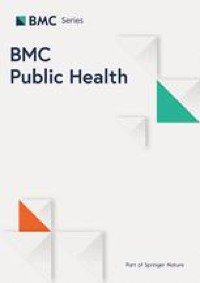Knowledge, attitudes, perceptions, and COVID-19 hesitancy in a large public university in Mexico city during the early vaccination rollout

The results of our study highlight the high acceptance rates (96%) of vaccination among academics, students, and administrative personnel of a public university in Mexico City.
Our findings contrast with two nationally representative surveys conducted at the end of 2020 among Mexican adults that showed COVID-19 vaccine acceptance of 62.3% and 82%, respectively [13, 18]. The higher acceptance rates in our study conducted almost six months later may be due to increasing trends of vaccine acceptance over time after intense vaccine promotion campaigns and high hospitalization and mortality rates due to COVID-19. Different studies have described changes in acceptance or rejection trends over time. Sallam et al. reported that acceptance increased from 56.9% in April 2020 to 75.4% in June in the United States [19]. On the other hand, the survey of several European countries by Neumann-Böhme et al. reported a 20% decrease in acceptance during their study period [20]. As described previously for the Mexican population [13], we found that unpaid work and fewer years of formal education were associated with COVID-19 vaccine hesitancy by bivariate analysis.
Our definition of hesitancy allowed us to encompass individuals who refuse vaccination and those who have doubts about being vaccinated in the short term. This definition enables better feedback for public policies since it considers factors related to trust, perceived effectiveness, and convenience [6]. Diverse studies suggest that the decision to be vaccinated varies according to the disease, the type of vaccine, the target population (age, level of schooling, race, ethnicity), the particular socio-economic context, the country´s income, the existence of legal regulations regarding vaccination, vaccine access and professional information [21,22,23]; additionally, different definitions of vaccine acceptance, hesitancy, and refusal influence the results.
An advantage of our study was that we explored reasons for hesitancy. We found that the main reason for vaccine hesitancy was fear of adverse effects. This factor has been widely described in the literature [11, 12, 22,23,24].
Our results underline the importance that the population links to the recommendation of the medical personnel. Participants who distrusted physicians’ recommendations were nearly four times more likely to refuse the vaccine. Nehal et al. described that vaccine guidance was relevant, both from the members of participants’ social networks and those of their physicians [9]. According to several authors, trust refers to the attitude towards the vaccine advice from health personnel or community leaders [12]. Different studies have documented the usefulness of the person-centered health care model in changing behaviors and attitudes. The benefit of the model is based on health personnel’s willingness to listen and privilege the preferences, needs, and individual values of the person who consults them [6].
The population that most likely refused the vaccine had not been vaccinated against influenza in previous seasons, a finding described by other researchers [23, 25]. Vaccine hesitancy was also linked to not knowing that handwashing prevents infection or refusal to use facemasks. We consider that these variables may be indicators of individual self-efficacy and the perceived effectiveness of health services. This path provides individuals with the necessary information and security to be active participants in decisions that concern their health. From a more general point of view, the vaccination process must consider political, economic, cultural, social, and religious contexts [26].
Other studies have found an association between vaccine rejection with age, sex, and socioeconomic level [9, 11,12,13,14, 22, 23, 27]. The direction of the association has been variable. These findings underline the complexity of vaccine determinants. As reported by other authors, our work detected that only the youngest age was associated with hesitancy among sociodemographic factors [11]. When adjusting the model for the significant or relevant variables, we did not find other demographic or clinical characteristics related to vaccine rejection.
Our study has several limitations. We followed the convenience and “snowball” methodology, so it does not necessarily represent the entire population sharing the same characteristics. Our study invited only academics, students, and administrative personnel of a public university with internet access; therefore, our results are not generalizable to the population who lacked this connection. By comparing the features of individuals who completed the survey with those who did not complete it, we found that those who had suffered from COVID-19 or had family members or acquaintances who had presented or died from this cause were more likely to complete it. Secondly, it was a cross-sectional study, so we do not know if there were changes in acceptance or rejection over time.


